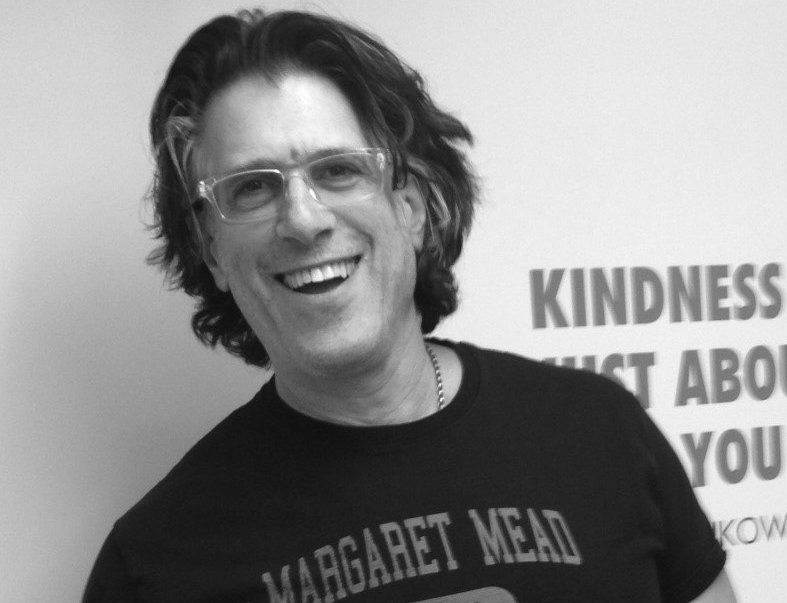The quest for healthy employee cultures has launched thousands of company surveys. And yet “culture remains the most overused and least understood concept in business,” says Stan Slap, founder and CEO of the international management consulting company SLAP, known for achieving legendary business performance for many of the world’s most successful companies. “We see organisations spending hundreds of thousands of dollars measuring every element of the current state of the culture and wellness of their organisations,” agrees Vanessa Gavan, founder and Managing Director of Maximus. “But afterwards, too many put very little energy into the next steps.” She continues, “I’m a bit sick of the standard culture solutions I see being employed, there’s a lack of holistic thinking. They’re undifferentiated, unoriginal and overwhelmingly, extremely safe.”
Cliched company team-building days are the butt of office jokes – think bowling tournaments and trust falls in grey, airless conference rooms. Regardless of whether the company splashes out on a day on the harbour or a fabulous weekend in an exotic location, only inspirational leadership can nurture employee, customer and management culture. “I see so many companies who do the measurement work, then a couple of small things – maybe a momentary feel-good event, but with no substance – and it just doesn’t stick,” says Gavan.
As a result, Maximus is forging “a really different approach to culture. That includes working with Stan and evaluating his genuinely different methodology,” she says.
Maximus is stepping back to gain an anthropological understanding of “how the norms of behaviour are created, how tribes form and operate, how you create adaptiveness and build a shared belief system,” explains Gavan. The word ‘system’ is critical. “Rather than purely focusing on diagnostics and intervention, we’re taking a systems view of culture,” she says. “Several discrete cultures exist in any business: understanding how they operate to support a company to thrive or inhibit it, is vital.”
“Stan’s view is that cultures are actual living organisms, and you have to respect that,” says Gavan of Slap, whom she met with earlier this year. “What I love about his methodology is the importance of the leader. You can influence a culture if you enable leaders to understand it. It comes down to fundamental human elements.
Gavan believes this approach will make working on company culture deep, lasting and much faster to put into play. “Rather than spending six months assessing and reporting, you can do some agile diagnostics to understand those different subcultures and use that information to help navigate how it’s all going: how the management, employee and customer cultures are all tying together.” Armed with understanding and empathy, intelligent leaders will be able to make cultures work for them rather than against them.
Slap has written two bestselling books on employee culture (Bury My Heart at Conference Room B and Under the Hood) and is working on a third. He tells us how he does it.

M MAGAZINE: YOU ARE THE CULTURE KING. WHY DO YOU THINK IT’S SO MISUNDERSTOOD BY COMPANIES?
STAN SLAP: Culture was Merriam Webster’s Word of the Year in 2014. That means that ‘culture’ had the most increased searches of any word in the entire English language. If ‘banana’ had made Word of the Year instead, by now companies would understand what a banana is, and they would recognise it’s not going to peel itself just to feed you.
Companies who don’t yet understand how to gain a culture’s real commitment come to believe that a culture is limited in its ability to impact the business and dismiss it as the asset it is. They end up blaming the culture for how it’s treated and spend all their time talking to a culture about what, how and why. However, none of these things are as important as ‘why not’.
Given the corporate logic and urgency of what you want your culture to do, and whatever financial reinforcement exists to do it, why would the culture hesitate? It has its reasons and you must understand what those are.
Many companies understand that culture is important, even if they don’t fully understand what it is. And they certainly understand that business performance is important. Yet, these are two parallel lines of focus in the business. The key is to collapse them into one. Cultural commitment is the absolute driver to business performance.
MM: WHAT IS CULTURE, THEN?
SS: A culture automatically comes into existence whenever a group of people share the same basic lifestyle, environment and tradition. They naturally band together to share common beliefs about the rules of survival and emotional prosperity. Whether it’s in the jungles of Samoa or the jungle in-organisation, the culture asks itself: ‘What does it take for me to survive in this company, working for you and then, knowing that I’m going to basically be okay, how do I get rewarded emotionally and avoid punishment?’

MM: DOES CULTURE HAVE TO BE A SHARED-BELIEF SYSTEM?
SS: No, ‘the way things are done around here’ is just the currency of the culture. A culture is the self-protective organism that obsessively collects survival information, validates it as beliefs, and shares these amongst itself. An employee culture is an independent organism living right inside the enterprise with its own purpose and all the power to make or break any management plan and any manager. Its purpose is to protect itself, not the company. The key to maximising a culture’s commitment is to align protecting itself with protecting the company.
Three cultures decide the success of any company: the manager culture, employee culture and customer culture. They’re doing that in your company while you’re reading this sentence.
MM: WHY IS THE EMPLOYEE/CUSTOMER CULTURE SYSTEM SO IMPORTANT TO A COMPANY’S SUCCESS?
SS: About half the work my company does is with our clients’ customer cultures. Gaining them true brand status, which means they have transferred sustainability of their company to their customers, ensuring they will then advertise and sell for them, and protect the company if it stumbles or gets attacked. The connection between a company’s employee and customer cultures is that most or all of your customers are employees somewhere themselves and so they’re part of the overall employee culture. They will decide to protect or reject your company based in large part on how they perceive you treat people just like them. That’s based on what kind of legitimate enthusiasm your employee culture shows to your customers… because if I’m an employee somewhere, as your customer I know I would never show that same kind of genuine enthusiasm unless I was being treated with a certain type of deep – and rare – respect.
You are on your way to becoming a brand if your customers don’t just want to buy from you, they want to work for you, too.
MM: IS IT POSSIBLE FOR A COMPANY TO RIDE ROUGHSHOD OVER CULTURE AND SUCCEED?
SS: Sure. But for how long, at what cost, and what definition of success? You can embed the costs of not having protective evangelism from your culture – constant recruitment and retention issues, poor quality and customer experience, slow off the mark on innovation and business transformation – and pass those costs onto customers as your business model. But why would you? That’s deciding to be a mediocrity factory and bet that your competitors will be just as mediocre. If you want to run a great business, it has to be fueled by cultural commitment.
MM: WHAT ABOUT THE MANAGER CULTURE?
SS: The rules of survival and emotional prosperity are distinct enough for managers versus the general employee population that they are their own culture.
A culture isn’t a bunch of managers or employees: it is the belief system created when those groups form a relationship with their company. Managers don’t often think of themselves as a culture, though. A manager in one country, and in one company, in one position doesn’t realise that another manager, in another country, in another company, in another position may also believe they are trapped in some vague conspiracy between idiots above them and idiots below!

MM: DO CEOS HAVE A CULTURE AS WELL?
SS: Yes, but it’s a culture of one, which can be pretty tough at times. When you’re clawing your way to the top in your career, you can be convinced that everything will be figured out and fulfilling when you finally get there. When you get there and realise that there are still things that don’t feel right, and now I have all the apparent rewards of the job and who am I going to complain to and there’s nowhere else to go… People jump from the top floors in buildings, not the bottom.
The maximum commitment a culture can give won’t be shown until it has to be: protecting the company when the company is in real trouble. You can’t bank that when you need it; you have to put it away ahead of time. Gaining your culture’s commitment is not just about achieving performance. It is about achieving performance insurance, which is your ultimate legacy impact as a CEO.
MM: IS THE CEO THE MOST CRITICAL TO ALL OF THIS?
SS: A truly legendary CEO holds themselves to be both a chief culture officer and a chief brand officer (really the same thing). It doesn’t matter what grand chess moves you make at the top by day if at night all the pawns move themselves back to their original positions. But the responsibility belongs to all managers, at every level in an organisation. Unless they understand how to drive that goal from the top through their own cultures, every big plan is dead on arrival. How to gain maximum cultural commitment tends to be the greatest missing competency, among even the smartest management teams.

“Culture is an historically transmitted pattern of meanings embodied in symbols, a system of inherited conceptions expressed in symbolic form by means of which men communicate, perpetuate and develop their knowledge about and their attitudes in life.”
Clifford Geertz, The Interpretation of Cultures, Basic Books, 1977
MM: WHY IS LEADERSHIP SO VITAL?
SS: Real leadership – not the corporate subversion of a beautiful concept, and not a bunch of managers claiming to be leaders by position alone – is values based. In a world where the culture perceives everything as uncertain, a great leader’s values don’t change.
A culture doesn’t hate change, it hates the loss of the known rules of survival and emotional prosperity that change represents. The culture isn’t anti-business, it’s anti-unsafe.
When you are introducing change you must take the time to explain what isn’t changing. If you can say to your culture: this is new, this is different, we’re not going to do this, we’re going to start doing that, but at the same time say, times 10, here’s who we still are, here’s who we will always be… that’s what a leader does. A leader says this is who I am, and this is who I will always be. For a culture, true leadership is a lifeline of consistency amongst swirling seas of uncertainty.
MM: WHERE SHOULD LEADERS START?
SS: Start at the ending. No matter where you are in the arc of your management career it’s never too early to look back. Ask yourself, as if it was already over: what do I want it to have stood for? Did I want to build a company, did I want to make money? Now, those are all very good things. Do I want to have had a legacy impact on the lives of human beings who helped me do it? That’s a great thing. You don’t have to give up the very good things to get the great thing, but you do have to want the great thing in the first place.
Understanding the real and true motivations of an employee culture can be the definer of your career and your company’s success. But this isn’t just about your career or your company. As a manager you have a deep, lingering impact on the lives of the members of your employee culture.
A culture’s profound search for safety and meaning in an uncertain world is a reminder that we are all searching, that we all live in this same world. Treating your employee culture with empathy and grace is not simply a job-performance tactic, it is a mirror that reflects your own true humanity.
Can one manager really save the world? Given the state of the world today, that’s the only way it can be saved, with one person influencing one group at a time. My strongest recommendation to every manager at every level is: Be human first. A manager second.

SLAP ON MILENNIALS
A lot of companies are frustrated and even resentful of having to cater to millennials. They despair about their apparent sense of entitlement and restlessness. But millennials are not about the snacks and the stock options. What they want most is a reason to believe in the work they do and who they do it for. This is what is most often not legitimately provided by companies, or even expected by older generations in culture. So, the great gift of millennials is not just their energy, it’s demanding of the company what the company should always have been providing to the culture: a reason to believe. Millennials are a gift.
SLAP ON AUSTRALIA
I’ve spent a lot of time in Australia and love it, but I’m not Australian. I do think a certain cynicism may be innate in the Australian cultural character, which translates to business culture. But cynical doesn’t mean a culture doesn’t care. Cynical just means it hurts to care. Any Australian company culture still has plenty of commitment to give if its believes it’s safe and sane to give it. I have to say that I’ve also found an outstanding feature of the Australian culture is that it is wonderfully optimistic – human and hopeful. Are there cultural problems in Australian companies, some of them industry-wide? Yes, but those are not the cultures’ problem. Your culture will give you whatever you want, you just have to give it what it wants first. The most important epiphany for any Australian company is that it is not the responsibility of your culture to understand the business logic, it is the responsibility of your business to understand the culture’s logic. Get this and you’re unbeatable in any market you choose to own.
This article was originally published in the 2nd edition of M Magazine, an exclusive print magazine aimed at inspiring and driving change through Australia’s executives and heads of HR.
Related Insights

The Changing Landscape of Sales Leadership
On my recent holiday I read Dan Pink’s new book, To Sell is Human. The chapters argue the growing importance of sales skills in both traditional and non-traditional sales roles. Dan’s perspective runs against the viewpoints of many that believe the art of sales is in decline. In a world full of information that is so easily accessible through technology, many think digital and social marketing is replacing the role of the traditional “salesman”

Understanding the Importance of Emotional Intelligence
Growing research over the past 15 years suggests that another key ingredient distinguishes good leaders from great leaders – Emotional Intelligence or EI. Having a good understanding of others’ EI will help you to attract, retain and grow a robust leadership pipeline.

Success and Survival — It’s All in the Mind
There are many stories of individuals who have overcome unbelievable odds, and through inner-strength, have pulled themselves to safety. But why? What makes these people different? Does this ability to survive translate into the business world?